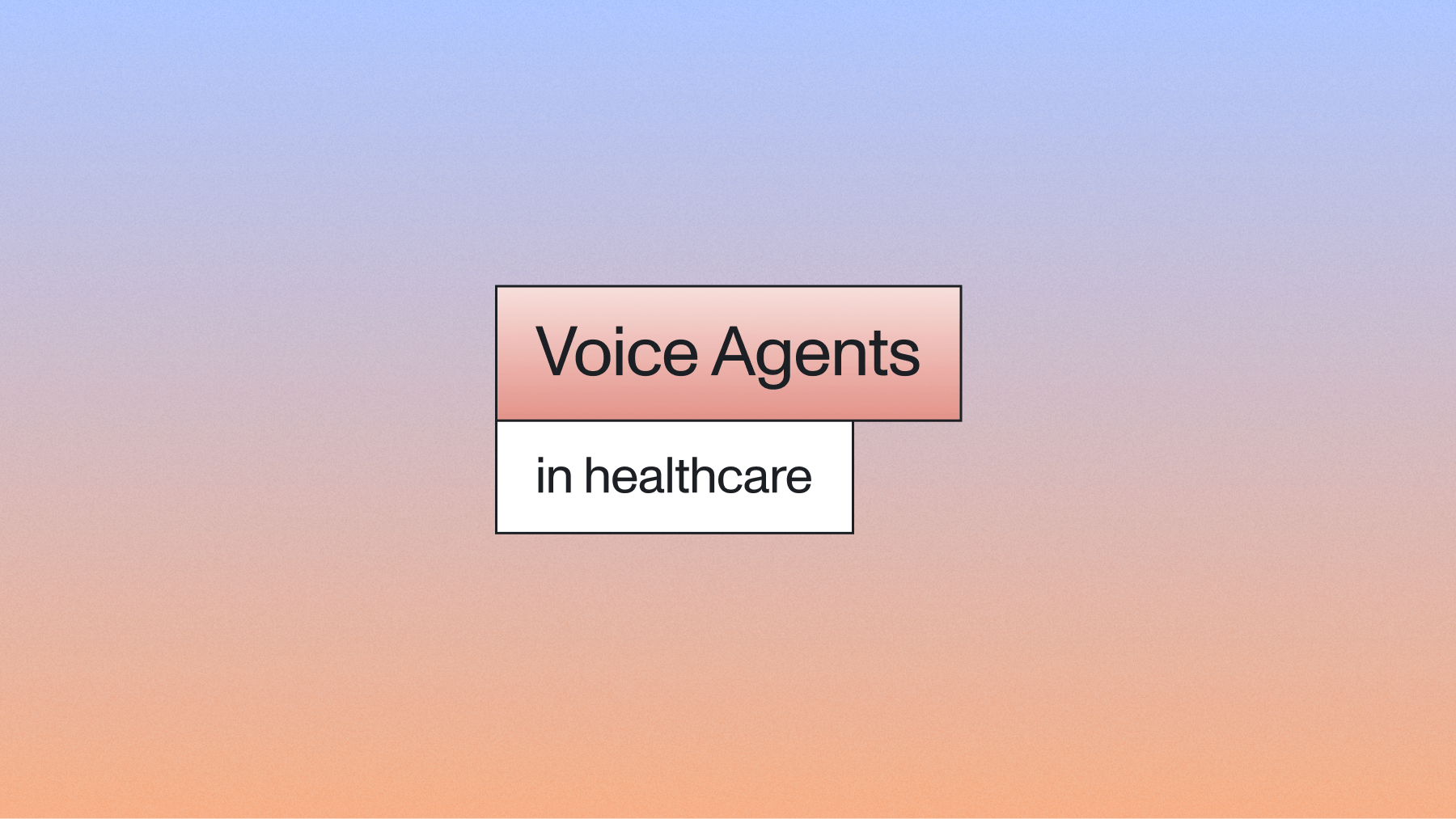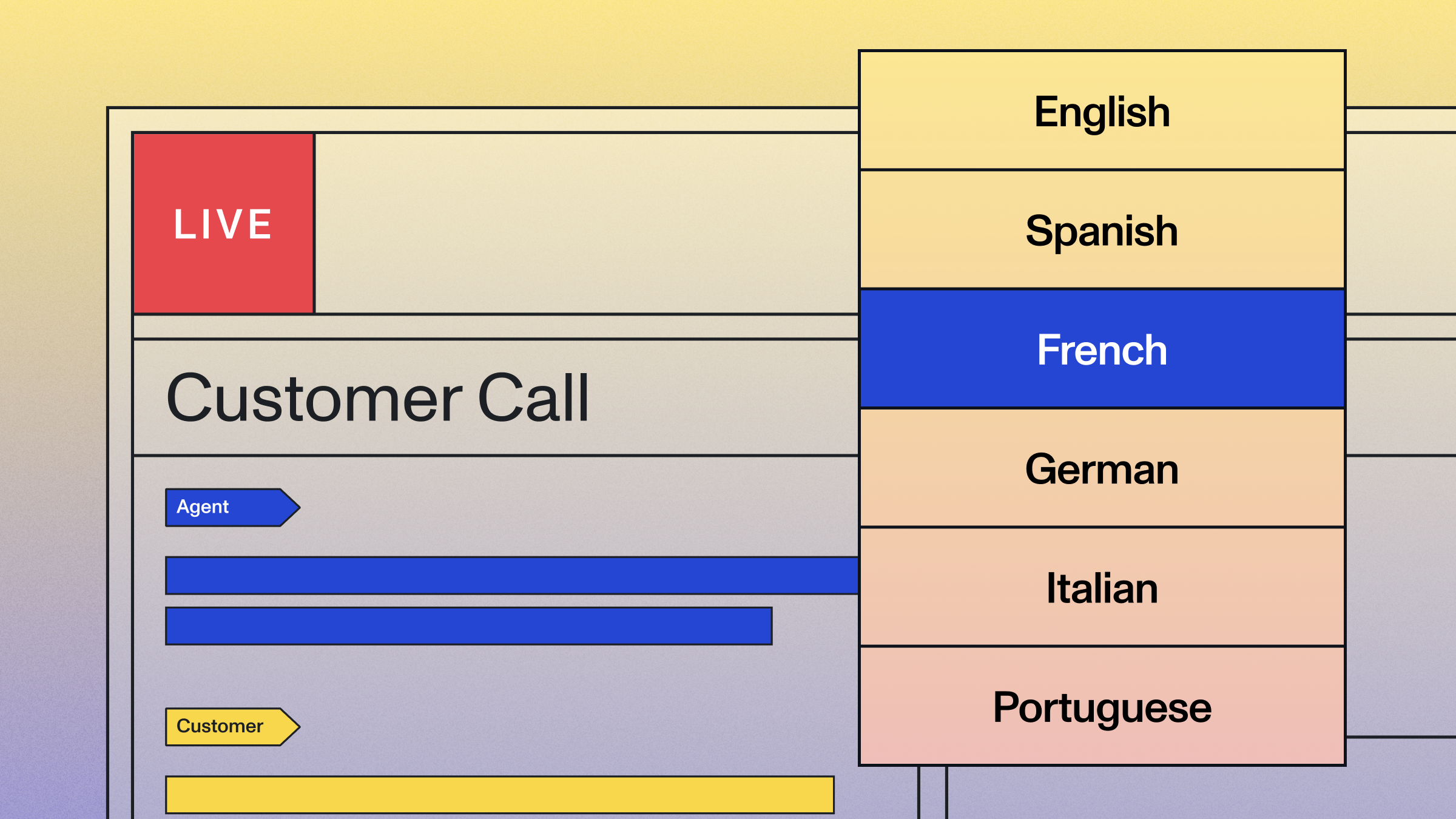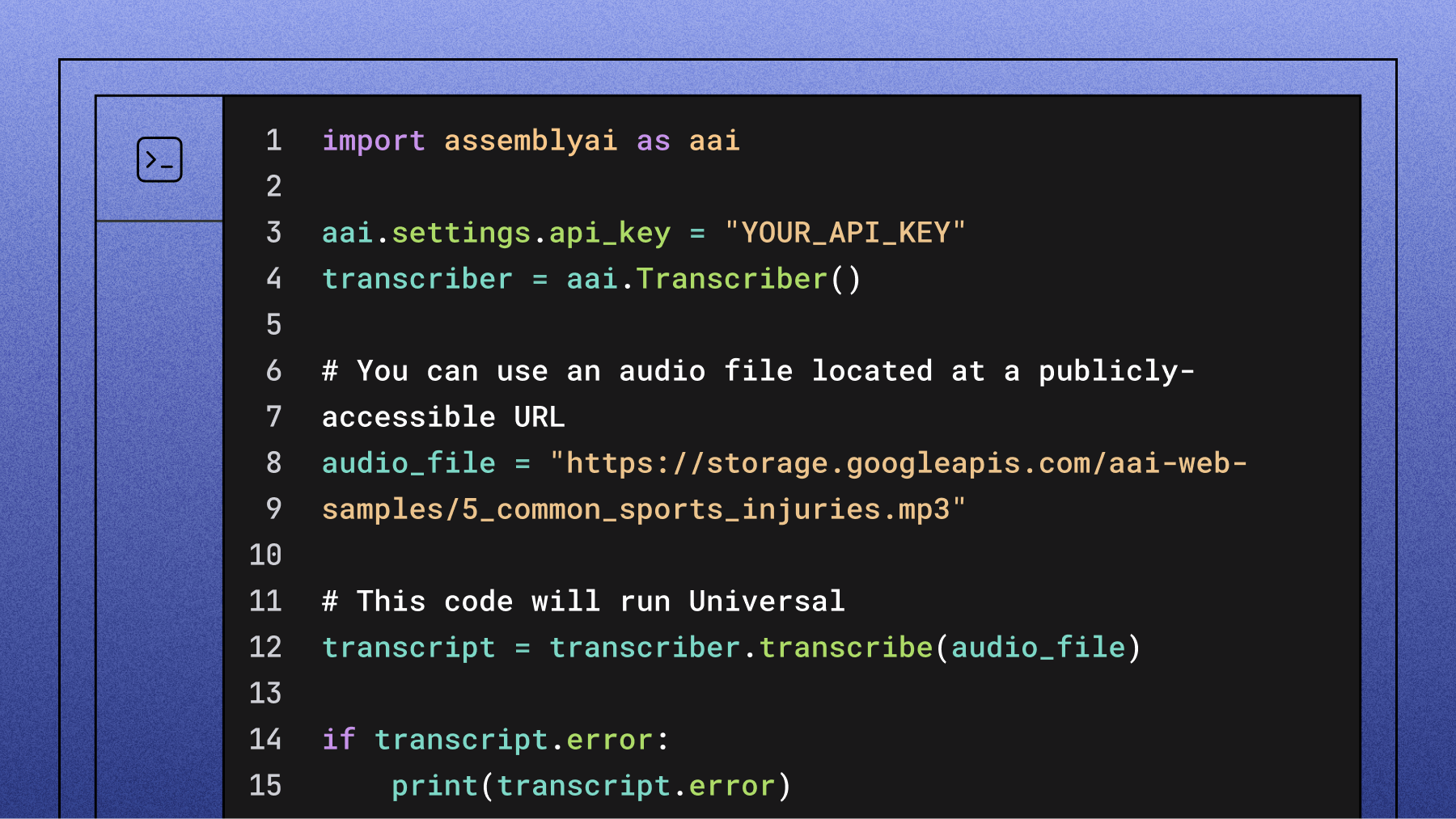Voice agents in healthcare: Automating phone interactions for scheduling, billing, and more
Voice agents in healthcare automate appointment scheduling, insurance verification, and prescription refills, improving patient experience and efficiency.



Healthcare voice agents are aiding patient phone interactions by automating routine phone calls for appointment scheduling, insurance verification, and prescription refills. These AI systems combine speech-to-text technology, Large Language Models, and text-to-speech to create natural conversations that eliminate traditional phone menu navigation. Instead of pressing buttons, patients can speak naturally about their needs while the system processes requests in real-time.
The success of healthcare voice agents depends entirely on accurate real-time transcription that captures medical terminology, patient information, and insurance details with exceptional precision. When transcription fails to distinguish between similar-sounding medication names or mishears critical patient identifiers, the entire interaction breaks down. This article explains how healthcare voice agents work, their key applications, and the technical requirements needed to deploy them effectively in medical environments.
What are healthcare voice agents and how do they work
One application for healthcare voice agents are AI systems that answer patient phone calls and handle routine tasks like scheduling appointments, checking insurance benefits, and processing prescription refills. Think of them as digital receptionists that can understand what you're saying and respond naturally—no more pressing 1 for billing or 3 for pharmacy.
These systems work through three connected technologies. First, speech-to-text converts your spoken words into text that computers can understand. Next, a Large Language Model (LLM) processes your request and figures out how to help you. Finally, text-to-speech technology converts the response back into natural-sounding voice.
Unlike traditional phone menus, voice agents understand conversational speech. You can say "I need to move my Tuesday appointment to next week" instead of navigating through multiple menu options.
The magic happens in milliseconds through a continuous loop of listening, understanding, and responding. When you call, the voice agent starts transcribing your speech immediately while processing what you need and preparing its response.
The role of real-time transcription in voice agent conversations
Real-time transcription is the foundation that makes natural healthcare conversations possible. For example, Universal-Streaming model uses an immutable transcript architecture where finalized words never change—only the very last word of a Turn object might appear as a partial that gets completed in the next message. This streaming approach lets you interrupt the agent or change topics mid-sentence, just like talking to a human.
Here's why accuracy matters so much: if the transcription gets your medication name wrong, the entire system fails. The LLM can't process a request for "metroprolol" when you actually said "metoprolol."
Key transcription stages and timing:
- Audio capture: Records your voice in under 50 milliseconds
- Speech detection: Identifies when you're talking in 100-200 milliseconds
- Text conversion: Transforms speech to text in 200-400 milliseconds
- Context processing: Refines the transcription using conversation context in 100-200 milliseconds
The best systems complete this entire process in under one second, which feels instant during phone calls.
Common healthcare voice agent phone applications
Voice agents excel at handling the routine tasks that eat up your healthcare provider's time. Patient scheduling represents the biggest use case: these systems can book appointments, handle cancellations, and collect pre-visit information without any human involvement. They check provider availability in real-time and confirm your insurance details automatically.
Insurance verification and billing support forms the second major application area. The voice agent accesses your insurance company's database to explain your coverage, check claim status, and process payments over the phone.
Medication management rounds out the core applications. Voice agents process refill requests by checking with your pharmacy, send medication reminders, and answer basic questions about prescriptions.
Benefits of healthcare voice agents with accurate transcription
You'll notice the difference immediately when calling healthcare providers that use voice agents with high-accuracy transcription. Wait times drop from minutes to seconds because these systems handle multiple calls simultaneously. You get consistent, professional service whether you call at 8am or 8pm.
The technology solves two problems that frustrate patients most: long hold times and inconsistent service quality. Voice agents don't have bad days, don't rush through calls, and maintain the same helpful tone for every interaction.
But here's what makes the biggest difference: these systems understand what you're saying the first time. When you say "I need to cancel my appointment with Dr. Rodriguez next Thursday," the system processes that complete request instead of asking you to repeat information multiple times.
Patient scheduling and appointment management
Accurate transcription transforms appointment scheduling from a frustrating experience into a smooth conversation. When you call with complex requests like "I need Dr. Smith on the first Tuesday after Memorial Day, but only after 2pm," the voice agent captures every detail correctly and translates it into actionable scheduling requests.
The system confirms your insurance eligibility while you're on the phone and provides specific pre-visit instructions based on your appointment type. This accuracy directly reduces no-shows because patients receive clear, correct information about their upcoming visits.
Common scheduling tasks voice agents handle:
- Booking new appointments with specific provider preferences
- Rescheduling existing appointments around your availability
- Canceling appointments and offering alternative times
- Collecting insurance information and verifying coverage
- Sending appointment reminders via text or call
Insurance and billing support
Voice agents navigate the complex world of insurance verification by accurately capturing plan numbers, group IDs, and member information that sounds similar over the phone. The transcription system must distinguish between "B as in boy" and "D as in dog" to retrieve the correct coverage details.
Once your information is verified, the agent explains your benefits in plain English, checks prior authorization status for upcoming procedures, and processes co-payments securely over the phone. This real-time verification catches coverage issues before your appointment, preventing claim denials and billing delays.
Challenges and limitations of healthcare voice agents
Healthcare voice agents face unique obstacles that don't exist in other industries. Medical conversations contain specialized terminology that standard AI models struggle to understand, and strict privacy requirements add layers of complexity to every interaction.
You'll encounter these limitations during calls that involve complex medical discussions, emotional situations, or unusual circumstances that fall outside the system's training. Understanding these constraints helps set appropriate expectations for what voice agents can and cannot handle.
Transcription accuracy in healthcare environments
Medical terminology creates the biggest challenge for voice agent transcription. Drug names like "metoprolol" or "hydroxychloroquine" sound nothing like everyday vocabulary, and mispronouncing them can lead to serious medication errors. Add background noise from busy waiting rooms, poor cell phone connections, or patients speaking softly, and accuracy drops significantly.
Patient identifiers present another accuracy challenge. Your name might have an unusual spelling, your insurance ID contains similar-sounding letters and numbers, and medical record numbers often include alphanumeric sequences that are easy to mishear.
Factors that impact transcription quality:
- Medical terminology: Prescription names, procedure codes, and clinical terms
- Background noise: Waiting room conversations, PA announcements, traffic sounds
- Connection quality: Poor cell reception, outdated phone systems, speaker phone distortion
- Speech variations: Accents, elderly patients with soft voices, emotional distress
Healthcare voice agents address these challenges through confidence scoring. When the system isn't certain about what it heard, it asks you to confirm important information or connects you to a human representative.
Privacy, security, and compliance requirements
Every healthcare conversation potentially contains Protected Health Information (PHI) that requires special handling under HIPAA regulations. Voice agents must encrypt your conversation during transmission and storage while automatically identifying and protecting sensitive medical information in their records.
The complexity extends beyond just encryption. Healthcare organizations need Business Associate Agreements with every technology vendor that processes patient data, and voice agents must maintain detailed logs showing who accessed what information and when.
Essential security measures for healthcare voice agents:
- End-to-end encryption: Protects your conversation during transmission using TLS protocols
- PII (PHI) redaction: Automatically removes sensitive information from system logs and training data
- Access controls: Limits which staff members can access conversation recordings
- Audit trails: Tracks every interaction with immutable timestamps for compliance reviews
- Data retention policies: Automatically deletes old recordings according to regulatory requirements





%20audio%20with%20timestamps%20for%20captions%20with%20AssemblyAI.png)